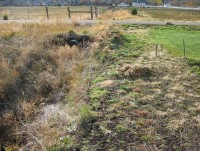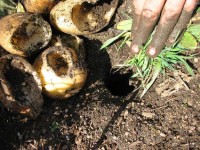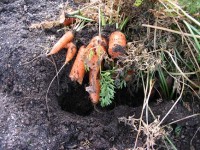Deter & Reduce Vole Populations with IPM (Integrated Pest Management)
You can deter vole populations and re-infestation, especially voles that forage above ground, by making their habitat less suitable for them. Lawn and turf areas should be mowed regularly. Close mowing in the fall before snow arrives can reduce damage to lawns. Remove weeds, heavy mulch, and dense vegetative cover surrounding the lawn areas. These things provide food for voles and protection from predators and the environment. If you remove their security and protection, their numbers will decline.
-Fallen birdseed from feeders attracts voles to an area. Cleanup and prevention of birdseed falling to the ground will reduce vole infestations.
-Landscape fabric or plastic mulch that is placed around your shrubbery provides an inviting place for burrowing vole types. Removal will expose them to more predators.
-Physical barriers like hardware cloth cages, gravel and PermaTill® worked into the soil around roots when planting can discourage voles.
-If voles are damaging trees, clear mulch and litter three feet (or more) from the base of trees.
-To help deter vole problems in your vegetable garden, don't leave leftover crops over winter.
-Remove the potatoes and carrots and any other root crops that may provide a food source for winter. Also remove any refuse for them to hide in.
-Along with habitat modification, we recommend trapping within the vegetable garden and the use of the Vole Control Bait Station System in ornamental and lawn areas.
- Encourage natural predators such as non-poisonous snakes and hawks. Cats can be good to have around too! *
If vole populations are high and severe economic damage is occurring, it will be necessary to include both the Vole Control Bait Station System as well as implementing habitat modification to control vole populations.
*Kaput Rat, Mouse and Vole Bait used with the Vole Control Bait Station System will not pose a threat to pets and non-target wildlife including the voles' natural predators. Learn more here.


